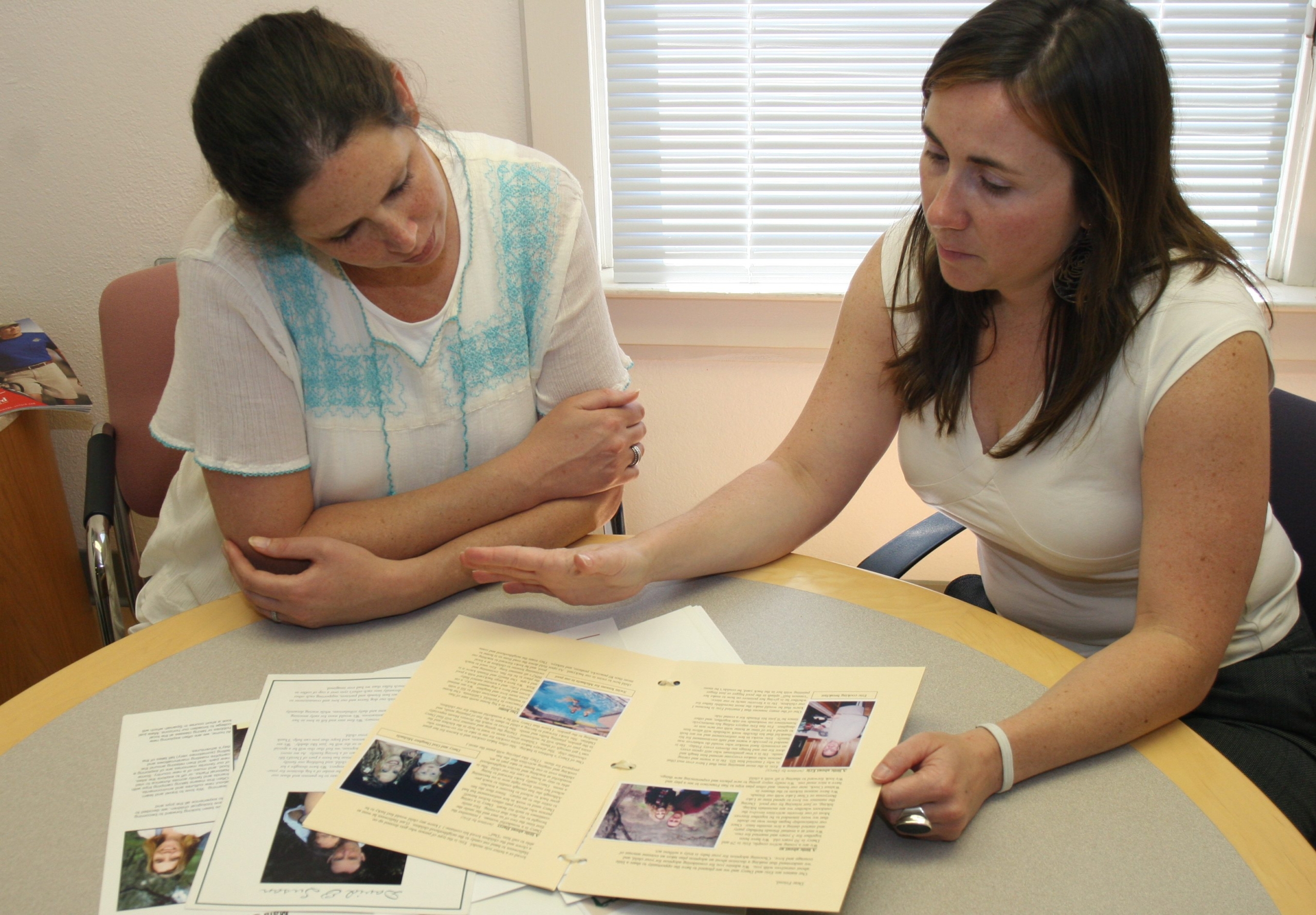In open adoption in California, birth parents and adopting parents have an opportunity to create a future contact agreement that will define the type of contact that the birth parents will have with their child and the adopting parents. These formal post-adoption agreements, sometimes called kinship agreements, are formalized in writing and filed when the adoption is finalized.
Some birth parents and adoptive parents create formal written contact agreement worked out before the birth or soon after the baby is born and placed. Other families decide to have an informal (verbal) agreement instead, choosing to work out contact organically over time as the relationship unfolds.
For some birth and adoptive families, navigating the contact agreement can be straightforward and smooth. In other open adoptions, the discussions about ongoing contact can be more complicated and emotional for all. Both birth parents and adoptive parents want to be generous with their commitment and yet want clear boundaries in order to make promises that they know they can keep in the months and years to come.
In my practice, I work with birth and adoptive parents where communication has broken down and a discussion about what both families are thinking about for future contact is needed, sometimes these discussions happen years after the adoption placement.
What happens when the relationship between birth and adoptive families becomes conflictual?
Over time, the future contact agreements—whether formalized or verbal—may fail to continue to meet the needs of the birth parents, adopting parents, or the child. Often, a breakdown in communication or a difference in the interpretations of the agreement can play a role in the relationships becoming conflicted. Challenging relationships between birth and adoptive families may create stress for all those involved, resulting in both sides feeling frustrated or undervalued. The conflict may trigger grief, loss, or trauma for the birth parents, who may already be experiencing feelings of isolation, depression, or shame. The adopting parents may feel worried, anxious, and uncertain, concerned that their role as parents could be threatened.
How do you define open adoption “mediation?”
Open adoption mediation is defined as the coming together of the birth and adopting parents in a supportive environment to address their concerns regarding their existing contact agreement or to create a new agreement with the help and support of a neutral facilitator. The goal of the mediation is for those involved to be able to openly and honestly address their concerns and to create realistic solutions that meet both parties’ needs.
In your experience what type of open adoption situations have benefited from mediation?
Many different types benefit from mediation! My clients choose to see me for mediation when they find that the written agreement—which may or may not have been filed in court—is no longer being followed. If the agreement had been filed in court, successful mediation can eliminate the need to involve the court. Mediation provides an opportunity to review the initial agreement and make appropriate and mutually agreed upon changes.
Those who have not initially created a formalized agreement having allowed the relationship to develop over time, may now find that each party possesses a significantly different view of how the contact should be defined.
Others may look to mediation to help open up closed adoptions and/or create contact when there was no initial agreement defined at the time of placement.
Is there anything that you find helps make for a successful mediation?
I find that the most important element to a successful mediation is the ability of the families to keep in the forefront of their minds the reason why they are coming together: to support contact that is in the best interest of their child. Reminding the participants of all the love and commitment that went into the child’s adoption placement is an important and motivating element that will need to be fostered.
The ability for each family to hold even a small amount of empathy for the experience that the other person is facing helps open the door for communication.
How would you suggest families prepare for mediation?
I recommend to those involved in mediation to approach the meeting with an open heart and mind. I encourage them to try to remember that the ultimate goals of the meeting are to create a positive visiting environment for the child and to foster relationships that enable the child to feel loved and supported by both his adoptive parents and his birth parents. It is also helpful for families to review positive experiences with each other: the strengths of the other party, their past relationship, and their hopes for the future.
I find that it is normal for open adoption arrangements to change over time, and I try to emphasize with my clients that mediation can be a very positive experience, leading to more open communication and a happy resolution.
Nina Anderson is a Licensed Clinical Social Worker in San Francisco, specializing in the area of adoption. Nina provides counseling, education, consultation, and mediation to adopting parents, expectant/birth parents and adoptees. Find more information on Nina on her website: adoptioncollective.org.
Related Post: Understanding ICPC: Interstate Adoption
Related Post: 4 Ways to Help Finance Your Adoption
Related Post: Creating an Adoption Lifebook



